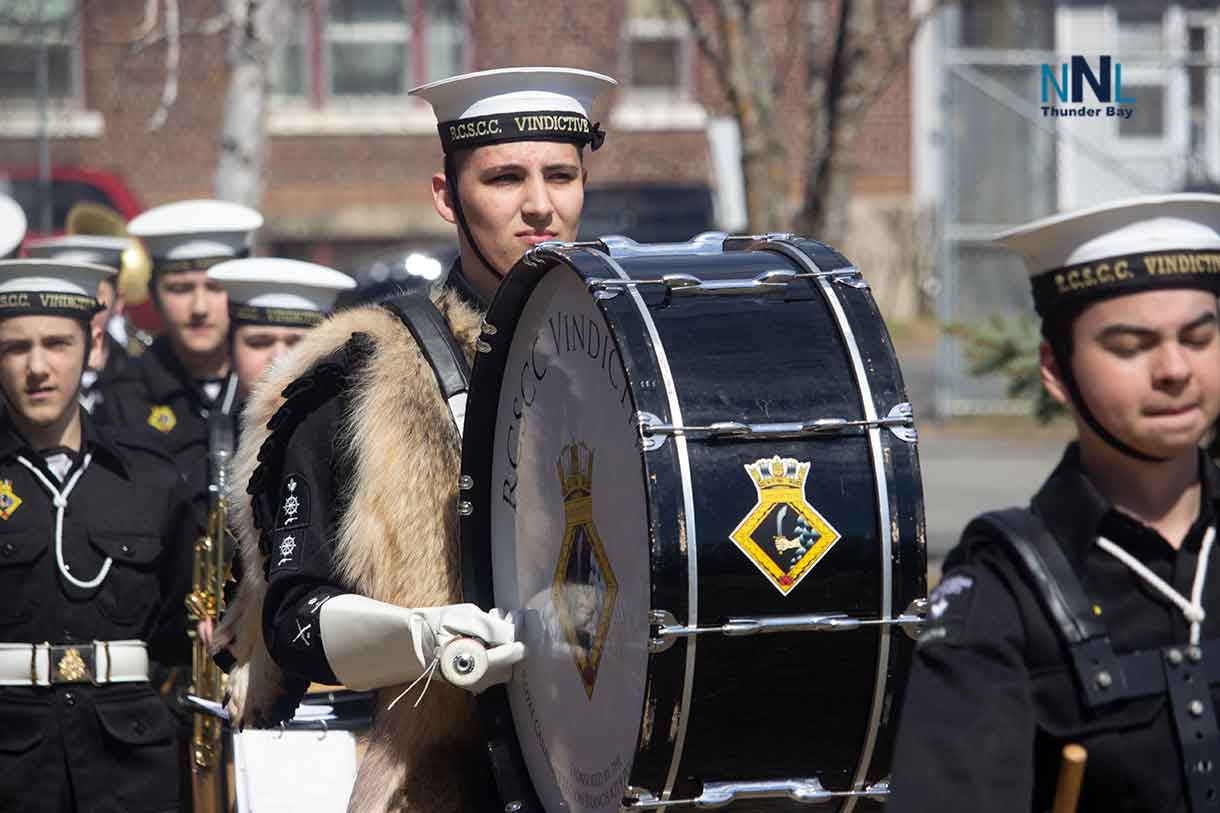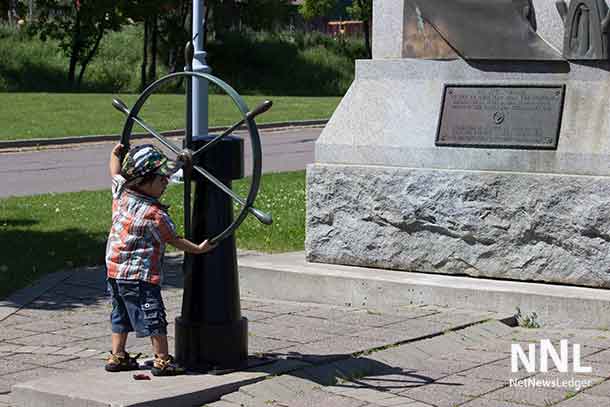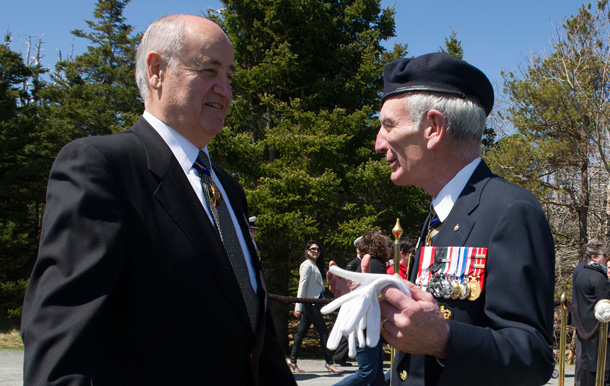THUNDER BAY – The Battle of the Atlantic was critical to winning World War Two. Keeping a vital lifeline for supplies to keep Britain in the war after the fall of France was very key to making sure there was a base for the D-Day landings in France in 1944.

The Battle for the Atlantic was remembered in Thunder Bay today at the HMCS Griffon. A capacity crowd gathered to remember the brave actions of the men and women who fought in the battles at sea.
On Sunday, May 5, Canadians from all corners of the country commemorated the sacrifices of the thousands of Canadians who fought valiantly during the Battle of the Atlantic from 1939 to 1945.
The cost of winning the Battle of the Atlantic was high, with the Royal Canadian Navy losing nearly 2,000 sailors and 33 ships, the Royal Canadian Air Force losing more than 900 aircrew members, and the Merchant Navy losing nearly 1600 Canadians and Newfoundlanders, and approximately another 70 ships.
The Battle of the Atlantic was the longest continuous military campaign in World War II, running from 1939 to the defeat of Nazi Germany in 1945.
The Battle of the Atlantic pitted the German Navy with their submarines or U-boats and other warships of the Kriegsmarine along with aircraft of the German Luftwaffe (Air Force) against the Royal Canadian Navy, Royal Navy, United States Navy, and Allied merchant shipping. Convoys, coming mainly from North America and predominantly going to the United Kingdom and the Soviet Union, were protected for the most part by the British and Canadian navies and air forces. These forces were aided by ships and aircraft of the United States beginning September 13, 1941.[9] The Germans were joined by submarines of the Italian Royal Navy (Regia Marina) after their Axis ally Italy entered the war on June 10, 1940. (Wikipedia)
Merchant sailors were also very brave doing their duty. It is important to realize that while military vessels were involved, it was also the bravery of the merchant mariners who were sailing the vessels that were equally the targets of the German U-Boats.
The National Commemorative Ceremony took place at the National War Memorial with participation by members of the Royal Canadian Navy and the Royal Canadian Air Force, as well as members of the Merchant Marines. Air Cadets and Sea Cadets from the National Capital Region, Navy League Cadets, Royal Canadian Legion Colour Party, local veterans’ associations, the Diplomatic Corps, and the Ottawa Children’s Choir were also present. Local ceremonies and commemorative events were held in communities from coast to coast.
Each year on the first Sunday in May, Canada and its naval community remember the sailors, aviators, and mariners who perished at sea during the Battle of the Atlantic, the longest campaign of the Second World War. It is also an opportunity to honour the courage of the veterans who served and the civilians who died during enemy attacks.
Quick facts
• The Battle of the Atlantic began on September 3, 1939, with the sinking of the SS Athenia by German submarine U-30. Allied forces fought for control of the North Atlantic Ocean to supply the war effort from 1939 to 1945, making this the longest campaign of the Second World War.
• In 1943, Rear Admiral Leonard Murray was put in charge of the Allied air and naval forces in the Northwest Atlantic, the only Canadian to command an Allied theatre of conflict in either World War.
• This year marks the 75th anniversary of the sinking of HMCS Athabaskan by enemy action, and the harrowing rescue effort by HMCS Haida which occurred on April 29, 1944.
• Fought largely by reservists in small ships built in Canada and operating from Canadian bases, the defence of North Atlantic trade against the submarine menace defined a naval role for Canada within a much larger alliance. After 1945, the Royal Canadian Navy became one of the best anti-submarine warfare navies in the world.
• Royal Canadian Air Force squadrons in Coastal Command and in Canada accounted for 19 U-boat ‘kills’, while RCAF crews serving in Royal Air Force squadrons were involved in many more in the North Atlantic.


